Kitchen of the Week: Historic Farmhouse Honored in a New Addition
An architectural designer seamlessly integrates a new kitchen and mudroom onto a 1730s home
Becky Harris, Houzz Contributor - April 7, 2022
For this couple and their two daughters, it was time to head back to the family farm. The husband had grown up in this beautiful stone farmhouse in Stockton, New Jersey. His parents had moved out and it had sat empty for about five years before he and his family decided to renovate it to suit their modern lifestyle. At the same time, they wanted to honor and preserve the historic 1730s architecture of the original part of the farmhouse.
The home had been added on to over the years, yet its wonderful bones remained intact. But the dark and uninviting kitchen didn’t work as a central hub for the family. Architectural designer Kim Wentzel oversaw the design and construction of a new 585-square-foot kitchen and mudroom addition, reworking the existing kitchen into a laundry room and butler’s pantry. The result is a successful marriage between old and new.
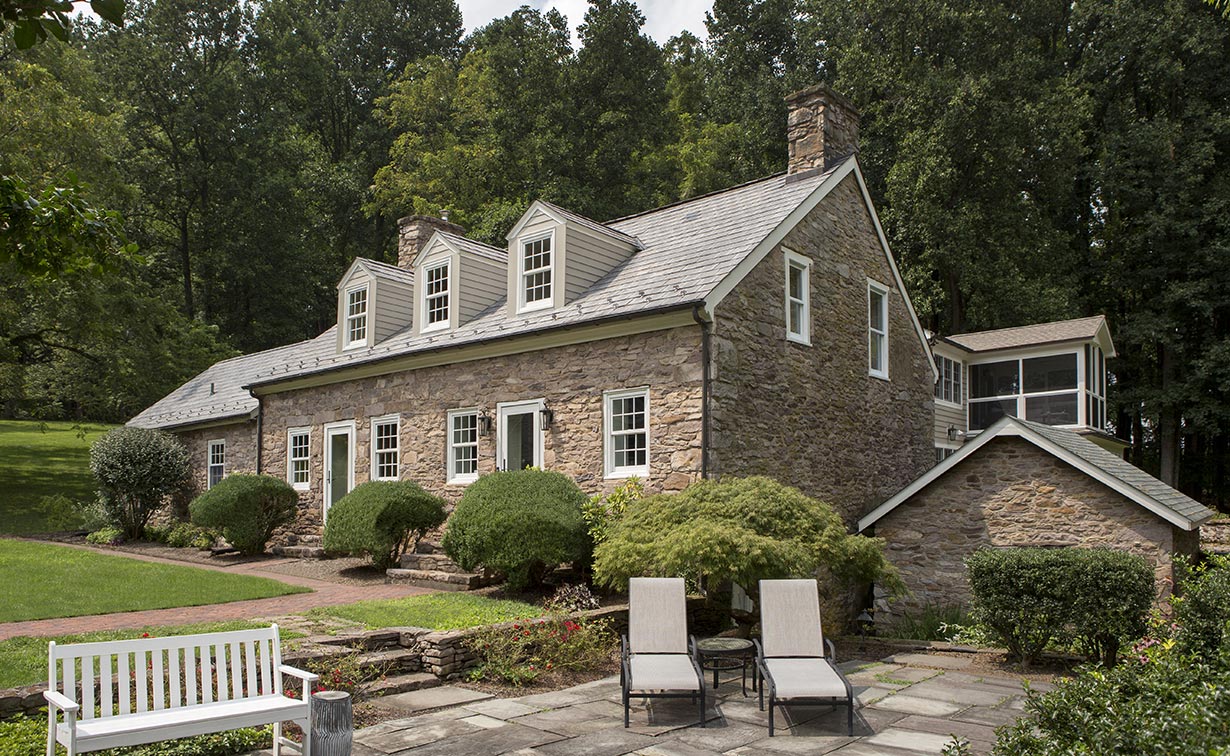
“After” photos by Tom Grimes
Kitchen at a Glance
Who lives here: A couple and their two young daughters
Location: Stockton, New Jersey
Size: 585 square feet (54 square meters)
Designer-Builder: Kim Wentzel of Lasley Brahaney Architecture + Construction
Interior designer: Katie Eastridge of Eastridge Design Home
Before heading inside to check out the kitchen, it’s nice to get a sense of the home’s architectural style. The original stone farmhouse was built in the 1730s. The stone addition on the left side of this photo and the larger addition on the back were added by the homeowner’s parents.
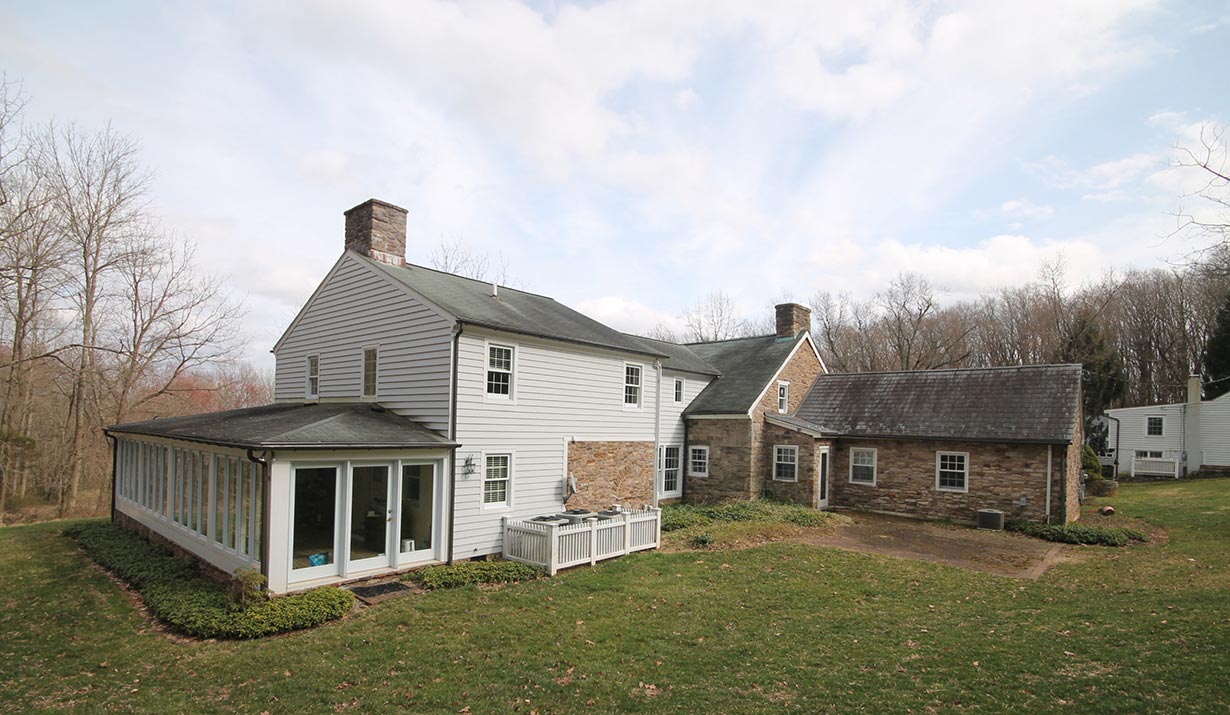
Before: Here’s the back of the house before the new kitchen addition was built. The portion with clapboard siding is one of the earlier additions. Wentzel nestled the new addition close to the corner of the L shape.
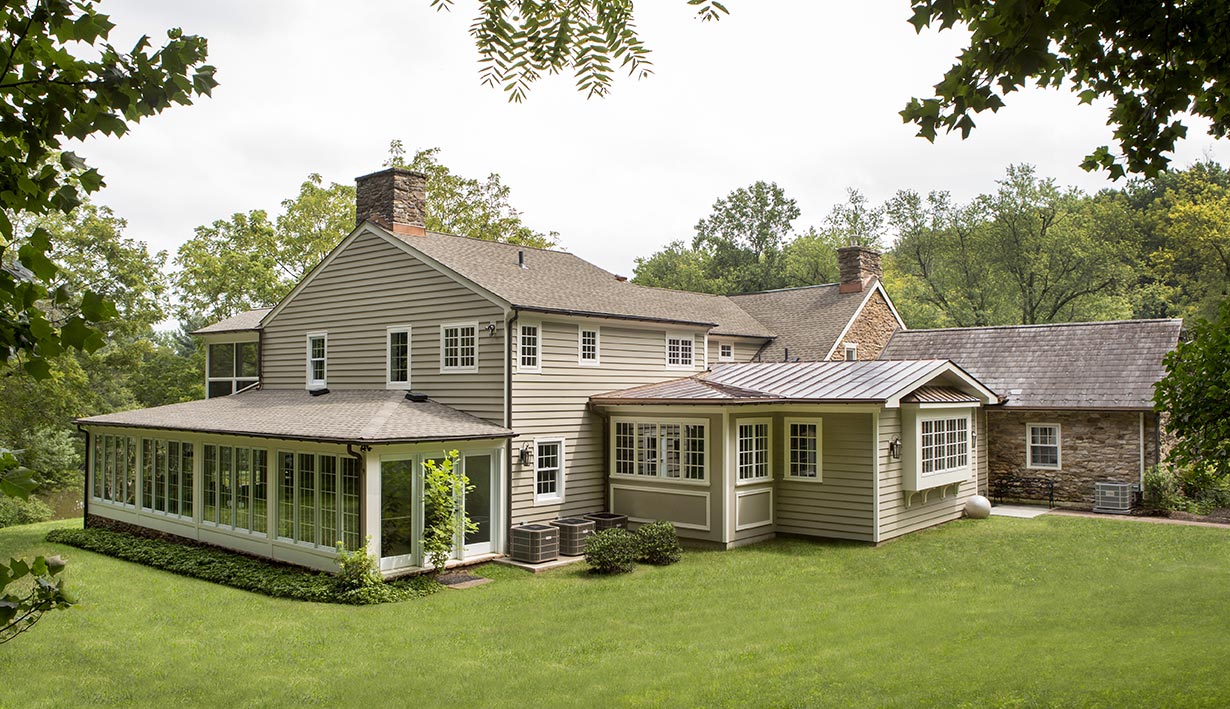
After: The alcove on the left side of the new kitchen addition houses a cozy breakfast nook. The box window is over the sink. Behind the addition is a path that leads to the entry of the new mudroom, which was also part of the addition. The windows fit right in with the existing windows on the house.
While the siding and window design match the older addition, the new roof is a copper-colored standing-seam metal roof. “To get additional ceiling height in the new kitchen, we had to go with a low-slope roof, which meant standard shingles were not an option,” Wentzel says. “There are existing slate shingles on the original portion of the home, but those tend to be very expensive. So metal roofing was an ideal option for drainage and the copper color goes very well with the stone and other existing exterior elements.”
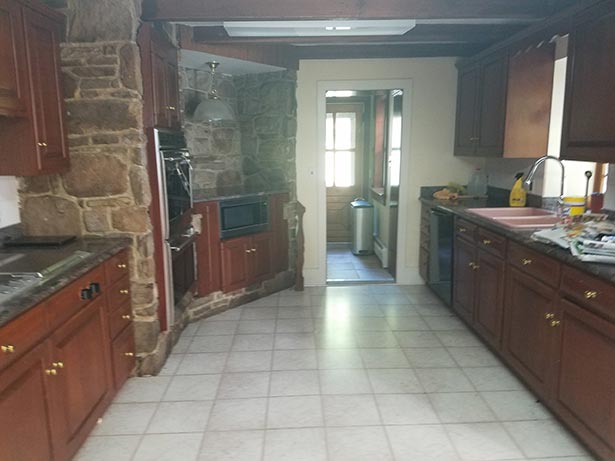
Before: The existing kitchen was in the center of the original farmhouse. While it had wonderful original beams and stone walls, it was dark and closed off from the rest of the house. As part of the renovation, Wentzel used this space to create a butler’s pantry and laundry room, a practical choice in an area that gets very little natural light.
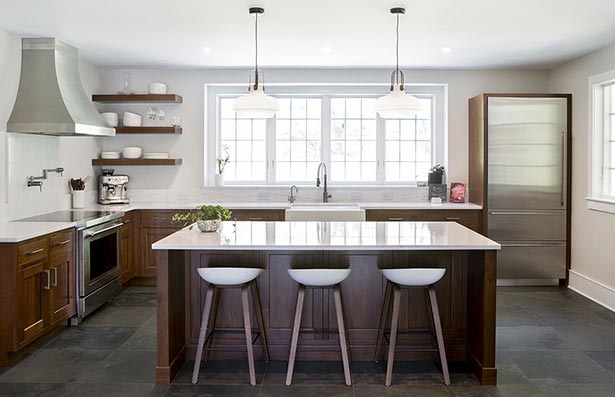
After: Wentzel designed the new kitchen and interior designer Katie Eastridge helped the homeowners with the finishes and some of the design details. The space has extensive windows that keep it light and bright. Smart storage including deep drawers on the lower cabinets and lots of storage space in the butler’s pantry eliminated the need for upper cabinets. This also helped give the space a light and airy feel. The clean lines of the countertops and open shelves, the stainless steel appliances and the sleek counter stools add modern touches to the room.
“We had actually planned on painted cabinets at first,” Wentzel says. “But I’d given Katie Eastridge a sample of walnut that matched some of the flooring in other parts of the house to use when finding paint colors. When she saw it, she suggested doing the cabinets in walnut. It turned out so beautifully, and you don’t see walnut cabinets very often these days. Lately most of the new wood cabinets you see are white oak.”
Between the floor tiles and lower cabinets, the room is anchored in dark colors. The windows, the light walls and the Cambria quartz countertops add plenty of contrast and keep the room feeling bright. Wentzel also created a nice balance along this window wall. She wrapped the fridge in walnut to add warmth around the stainless steel. “Wrapping the fridge also created a sense of symmetry with the open shelves because there’s walnut in both corners,” she says.
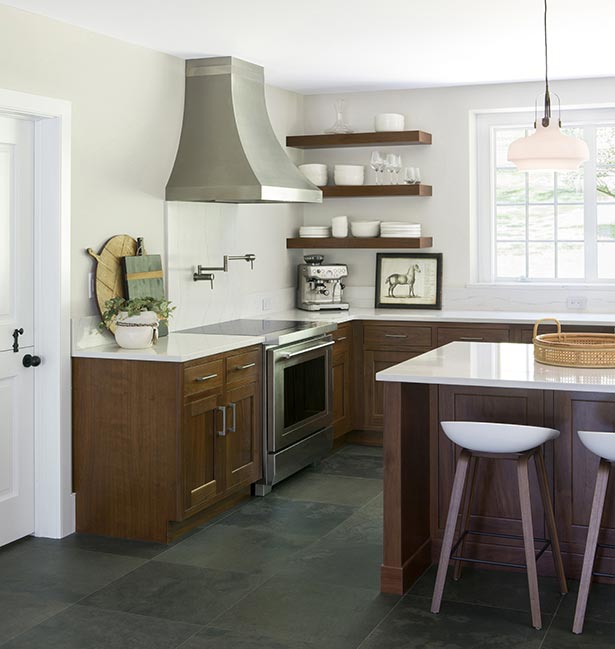
A large island with seating was one of the biggest must-haves on the young family’s list. The other side contains a beverage fridge, a microwave drawer and drawers for storage. The windows over the sink look out to a hillside meadow where the girls like to play. The meadow also contains the family’s chicken coops.
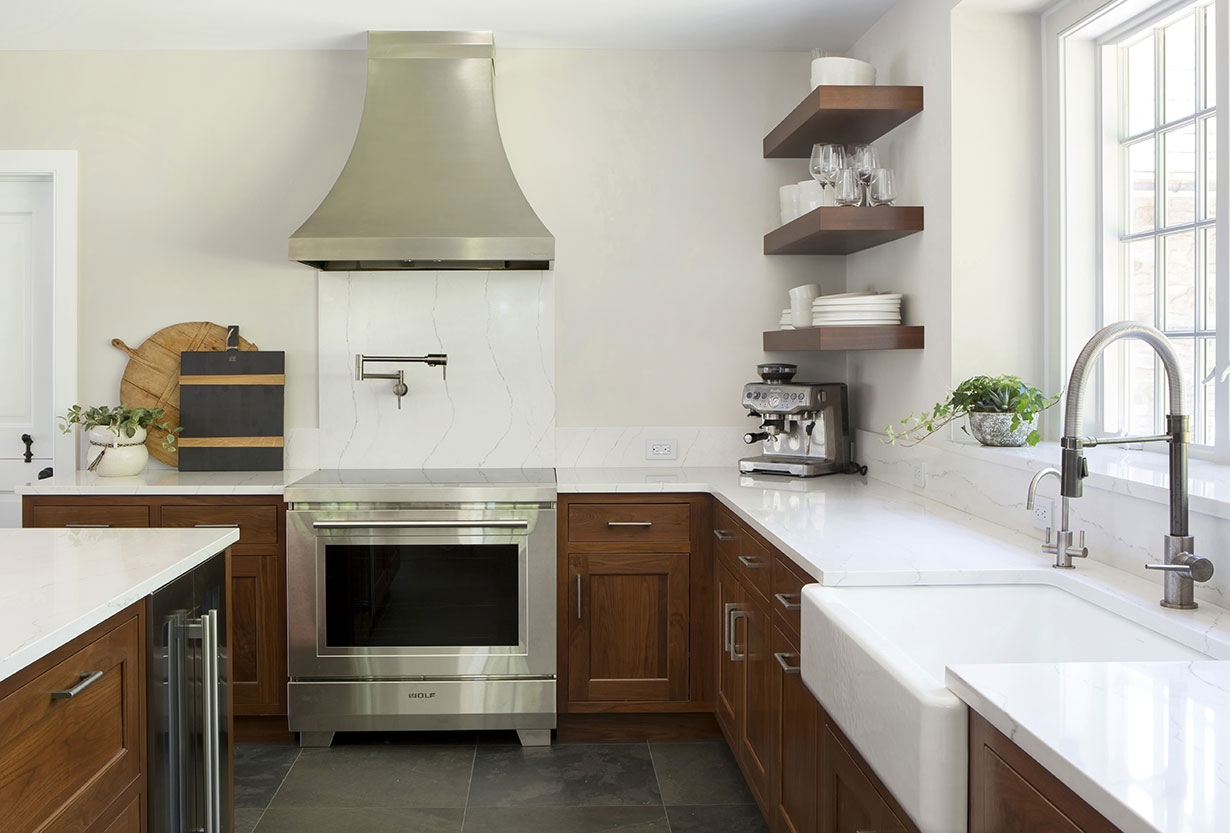
While the kitchen’s clean-lined and uncluttered look leans modern, the materials, millwork and windows honor the historic architecture of the farmhouse. The flooring is composed of 24-by-24-inch porcelain tiles that look like slate. It’s a great durable material for the working farm.
A white farmhouse sink was an apt choice here. The small faucet provides filtered hot and cold water. The balance of old and new elements was a great way to integrate modern appliances in the historic home. The range has an induction stovetop and a pot filler. The hood is readymade, customized by a few inches on top to reach the high ceiling.
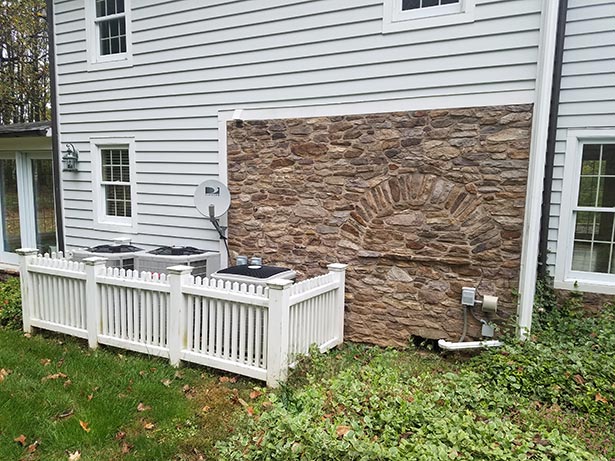
Before: This exterior stone wall was part of an older addition by the husband’s parents to tie it in with the original farmhouse. The new addition was added on here and the stone wall was incorporated into the new interior. The arched oven-shaped detail was a meaningful part of the architecture to both these homeowners and the previous generation.
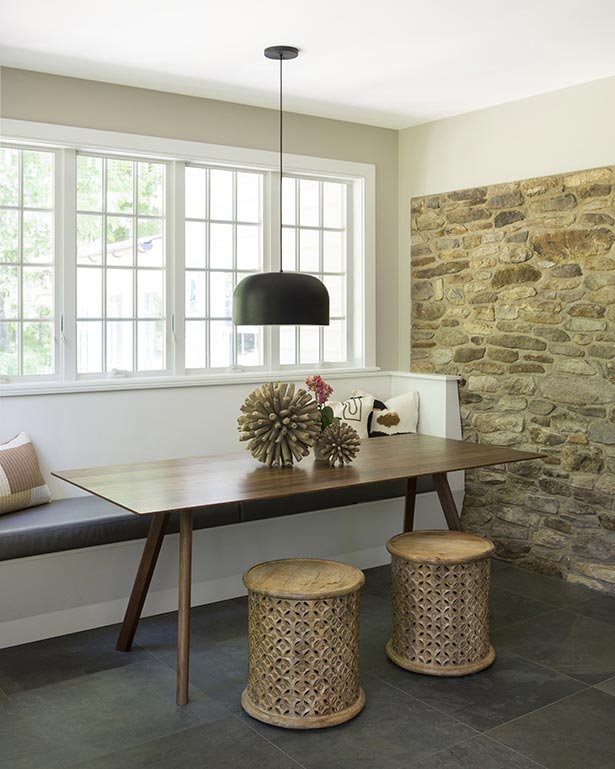
After: Another must-have on the list was a comfy breakfast nook for the whole family. When facing the
sink, it’s located to the right of the island in an alcove. The windows look out toward a pond on
the property.
Wentzel preserved the previously seen exterior stone wall, incorporating it into the addition to become
the interior wall seen here. The oven-shaped detail is just out of frame to the right. The stone brings
a texture from the original farmhouse into the space and adds to the cozy feel.
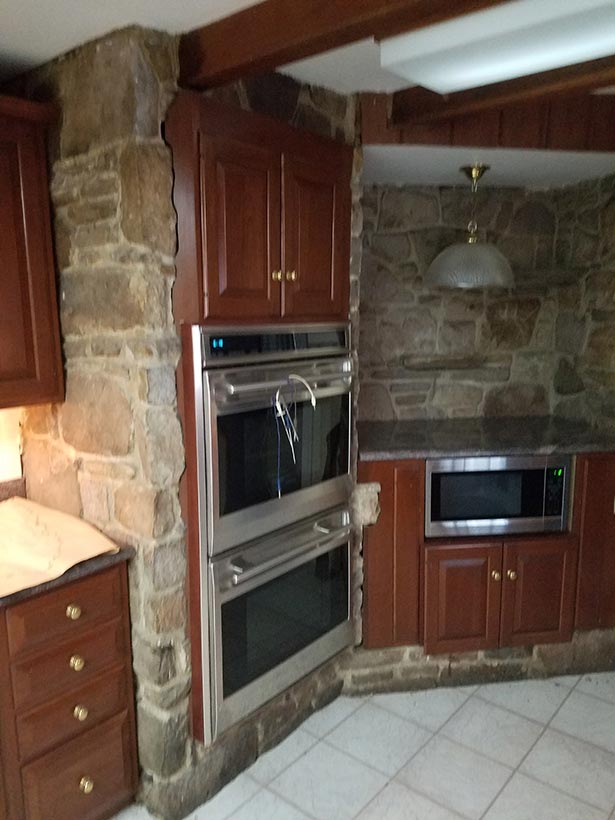
Before: Wentzel divvied up the previous kitchen space between the new laundry room and butler’s
pantry.
The homeowner’s mother had loved this double oven dearly. “It was top-of-the-line when she
purchased it and it was important to them to keep it,” Wentzel says. It still functions well and
they knew it would come in handy when they needed to cook for a big group.
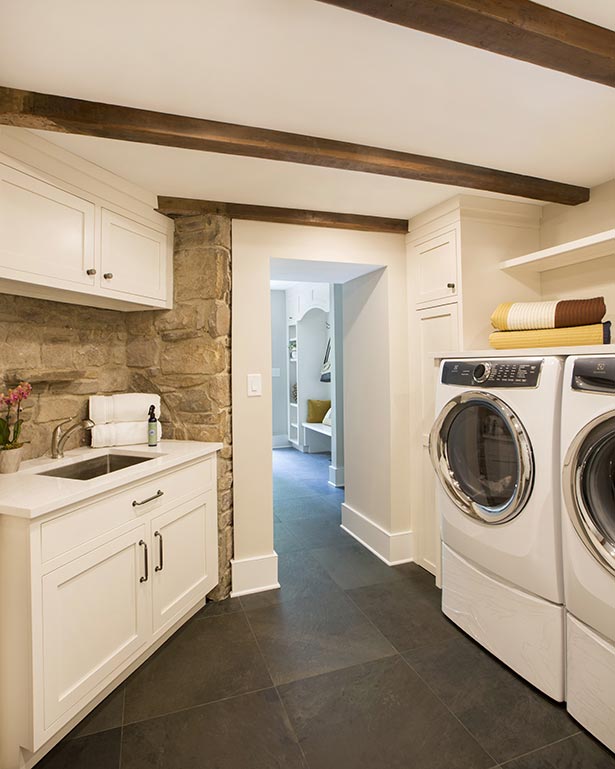
After: In the new laundry room, Wentzel kept the original beams and stone walls intact. The sink is
located where the microwave is in the previous photo. The room includes a sink for hand-washing
clothing, a broom closet and bulk storage. The space seen beyond the laundry room is the mudroom in the
new addition.
The existing ceramic tile floors in the space weren’t original to the historic farmhouse. So
Wentzel replaced them with the same slate-like porcelain tiles she used in the kitchen.
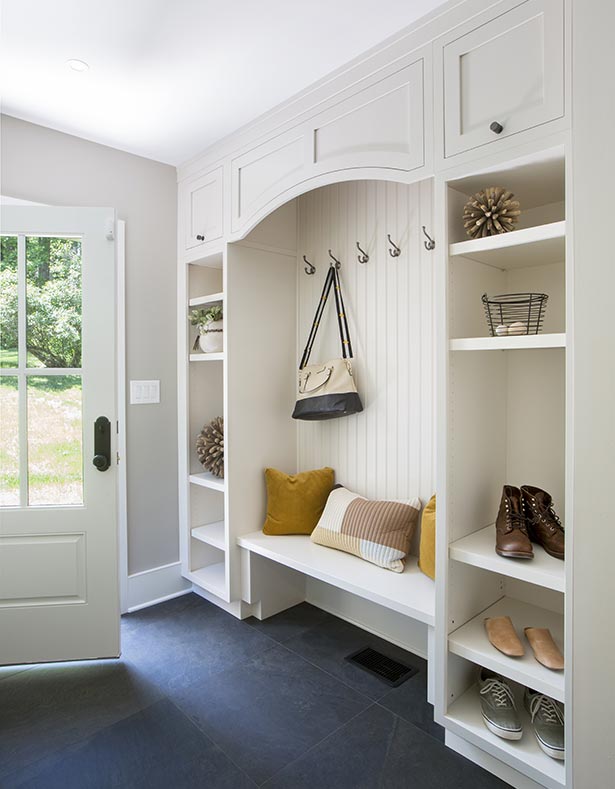
In the new mudroom entry, beadboard, Shaker-style cabinets and slate-like floor tiles suit the architecture of the house. Glass panes on the door let natural light into the space.
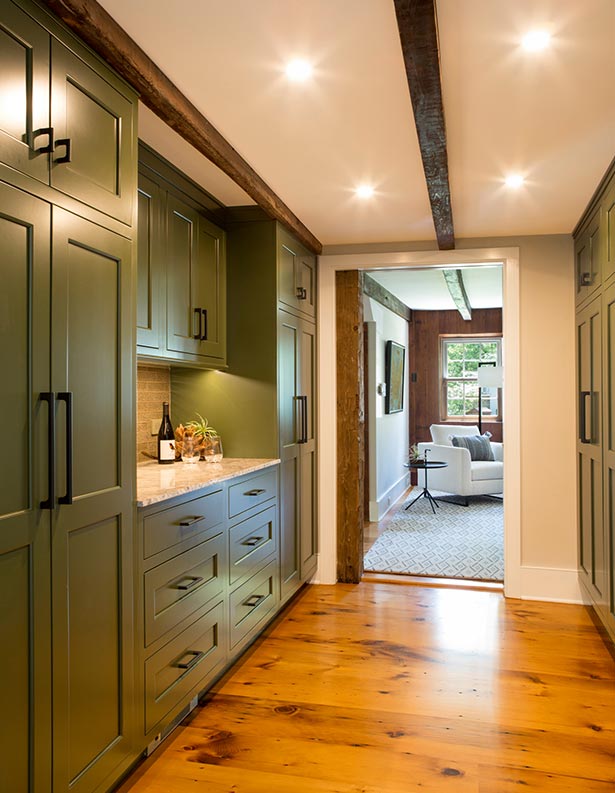
The new butler’s pantry in the original farmhouse features deep green Shaker-style cabinetry that’s
a lovely fit for the historic space. It includes a bar, bulk storage, a coat closet and a special
feature revealed in the next photo.
Wentzel was able to preserve the original wide-plank pumpkin pine floors, and she sourced matching
reclaimed boards to weave in where needed. Then she had them all refinished. It’s a great example
of all the character an old house has to offer.
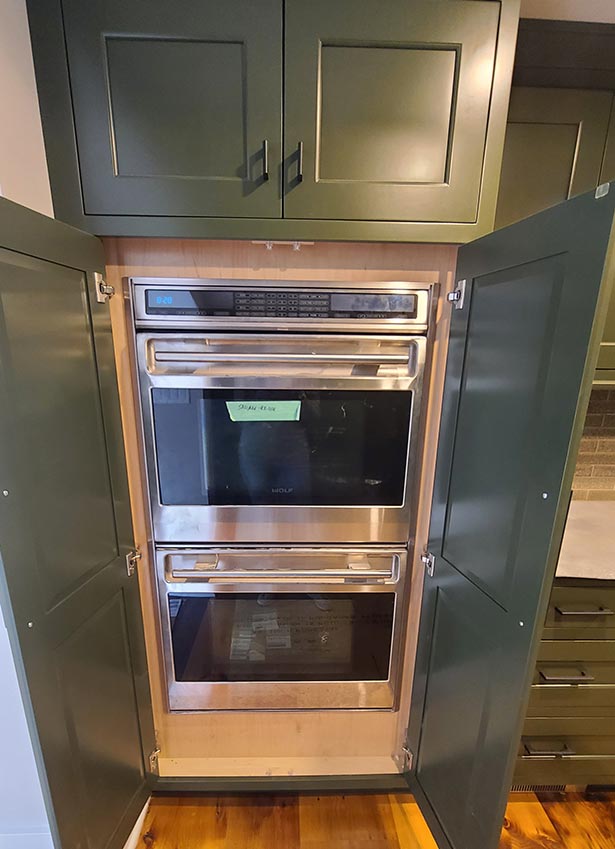
Remember the double oven with sentimental value? Wentzel placed it in the butler’s pantry and hid it behind cabinet doors for a seamless and more historic look. The ovens weren’t needed in the main kitchen space because it already has a range. “These are only used a few times a year,” Wentzel says.
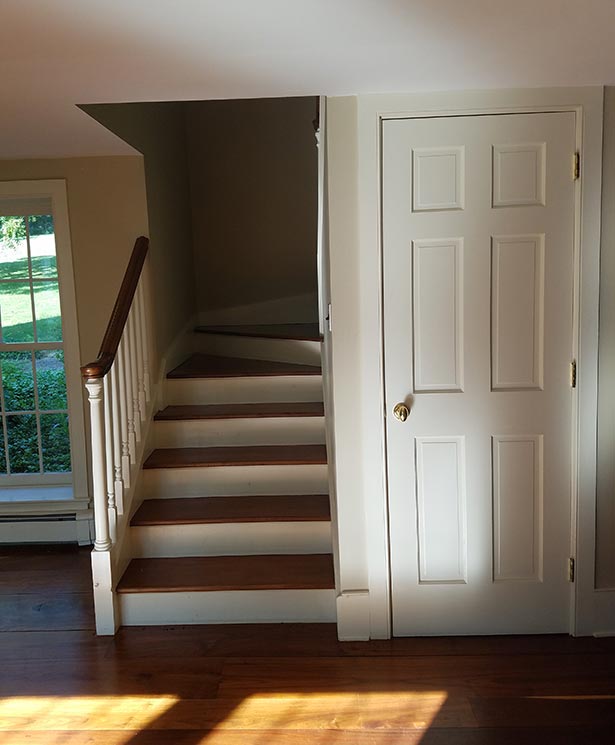
Before: The existing house ended behind the staircase. The door to the right opened to a linen closet. This part of the house was a prior addition and had the walnut floors that inspired the kitchen cabinet finish.
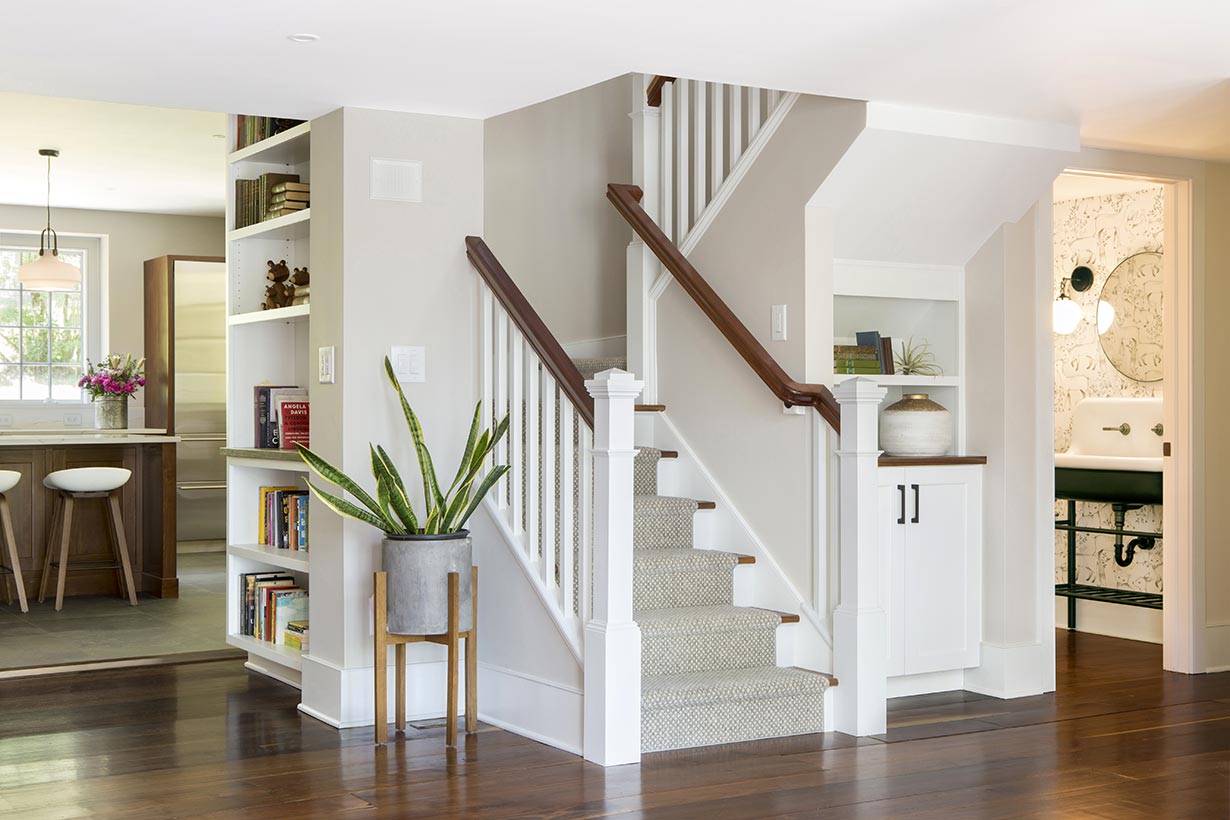
After: Now there’s a wide opening to the new kitchen from this hallway.
Wentzel replaced the linen closet with built-ins and shelves for a more open and pleasing look. Renovating the existing powder room was also part of the project. New wallpaper and sconces add some modern touches, while a Victorian-inspired sink suits the idea that the home evolved over the centuries.
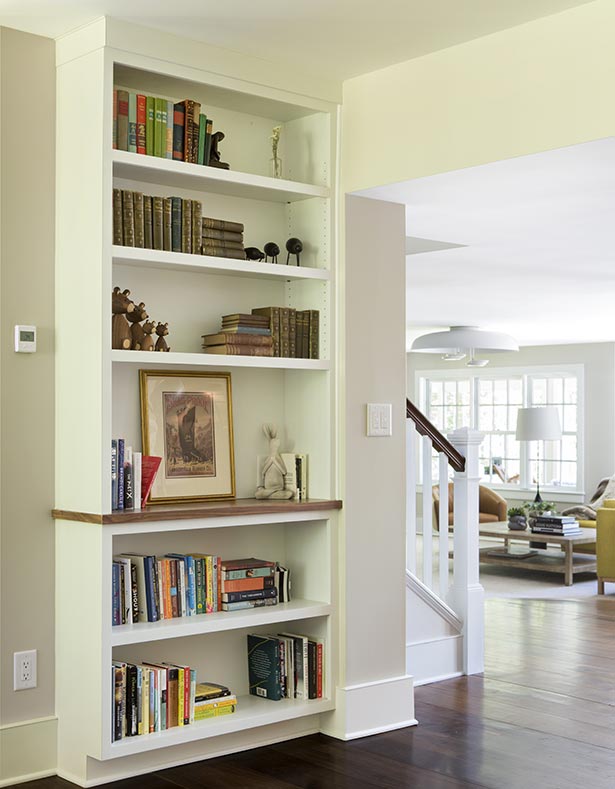
New built-in bookshelves add color on the walk back to the kitchen.
The addition was part of a first-floor renovation that kept the architectural bones of the home intact.





